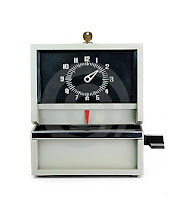 Light...it comforts us, warms us, brings us relaxation. Whether it is a ray of sunshine that filters through the window on a cold winter's afternoon, the dusky light that signals the end of day, or the soft light next to our favorite reading chair.
Light...it comforts us, warms us, brings us relaxation. Whether it is a ray of sunshine that filters through the window on a cold winter's afternoon, the dusky light that signals the end of day, or the soft light next to our favorite reading chair.While there isn't too much we can do to brighten a dark stormy day out of doors, we can change the personality and ambiance of a room in an instant? And establish yet another mood just as quickly? It’s easy as the flick of a finger with today’s controlled lighting advancements.
In fact, lighting controls are the most cost effective way to change the aesthetics of a room. One control can illuminate several room personalities.
Just
 like painting or furnishings, room lighting brings out the decorator in you. By using dimmers in different combinations throughout the room, you can switch from dramatic to relaxing to functional to night lighting – whatever the moment calls for. And today’s remote control systems let you preset each lighting setting so you can recall it at the push of a button. Program the lighting at bright levels for cleaning, then a dim preset for entertaining. Click again for the perfect in-home theater setting. Preprogram an entire lighting plan that includes the bar, framed paintings, track wall lighting, the dining room table, even your plants.
like painting or furnishings, room lighting brings out the decorator in you. By using dimmers in different combinations throughout the room, you can switch from dramatic to relaxing to functional to night lighting – whatever the moment calls for. And today’s remote control systems let you preset each lighting setting so you can recall it at the push of a button. Program the lighting at bright levels for cleaning, then a dim preset for entertaining. Click again for the perfect in-home theater setting. Preprogram an entire lighting plan that includes the bar, framed paintings, track wall lighting, the dining room table, even your plants. Don’t limit your creativity to the living and dining rooms. You can switch your kitchen from a brightly lit meal preparation center to a comfortable gathering place for guests. (Isn’t that where everyone seems to congregate anyway?) Dim the cabinet lights for decorative china silhouette effects. Then turn up the brightness when you need to shed light on the selection. Use the same cabinet lighting principle in the living room and library too.
Don’t limit your creativity to the living and dining rooms. You can switch your kitchen from a brightly lit meal preparation center to a comfortable gathering place for guests. (Isn’t that where everyone seems to congregate anyway?) Dim the cabinet lights for decorative china silhouette effects. Then turn up the brightness when you need to shed light on the selection. Use the same cabinet lighting principle in the living room and library too. Controlled lighting is also a luxury when the family’s asleep. Lights can dim automatically throughout the house, while illuminating nighttime pathways in halls and stairs. It makes late night bathroom and kitchen snack trips so much easier and safer, plus you won’t wake anyone up with sudden bright lights. Multiple dimmer controls let you set the lighting from either end of the hall, or from other rooms. Need to check on the sleeping kids? Turn the dimmer up slightly before you enter so you won’t wake them up. You can even have different preset lighting for both sides of the bed – one for reading, one for TV.

Other household controls can handle even more tasks for you. For example, come winter, they can automatically reverse the ceiling fan’s direction and slow it down. You won’t forget to turn on the security night lights because they’ll go on automatically, and shut off at daylight. Speaking of security, if you come home late, the remote in your car can light the whole house upon your arrival – and alert the security system.
The control panel itself can add a decorative touch. Don’t limit yourself the common denominator styles at the big box hardware store. A wide range of colors, textures and finishes are available from the professional electrician. And you’ll be pleasantly surprised at how few changes to your current home’s wiring are necessary. In fact, we can enhance your home’s appearance in the process of upgrading your lighting system.
 There’s one more controlled lighting advantage we can all appreciate – savings. By cutting down on all the bright lights, you’ll be also be cutting down on expenses, energy and your carbon footprint.
There’s one more controlled lighting advantage we can all appreciate – savings. By cutting down on all the bright lights, you’ll be also be cutting down on expenses, energy and your carbon footprint.Now that’s bright thinking!
Visit the Rapid Service website for your $25 Coupon toward any new installation or repair.










































